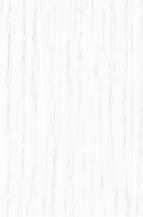FRESH SOLIDS
BY CAMELOT FABRICS
Fabric H: 37230210-02 1/2 Yard (Backing)
C: 214-0164
F:
Fabric
Pool Side Fat Eighth
Fabric
Mimosa Fat Eighth
Fabric
Orchid Fat Eighth
Fabric
Peach Blossom Fat Eighth
Fabric
Chartreuse Fat Eighth
Fabric
214-0166 Cactus Flower 1/3 Yard (Binding)
OTHER TOOLS & SUPPLIES
- 24” x 16” Rectangle of low-loft batting
- Basic sewing supplies
▪ sewing machine
▪ needle & coordinating thread
▪ iron & pressing surface
▪ measuring tape
▪ fabric shears & rotary cutter
▪ straight pins
▪ fabric marker
▪ curved quilting pins or adhesive spray
THE DESIGN
This pillow is made from squares, half square trianges (HSTs) and rectangles. The 5 3/4“ squares will be sewn together in a way to create 8 HSTs of each color, which will then be trimmed down to 2” squares and sewn into di erent blocks. This is a time saving tip.
NOTES
- Please wash, dry & iron your fabric before beginning, and trim your selveges.
- WOF = Width of fabric
- HSTs = Half square triangles
- Unless otherwise indicated, sew all seams with accurate 1/4“ seam allowance.
- Print pattern to 100% scale, measure the 1” test square on page 7 for accuracy before using the Arch Corner Pattern.
CUTTING
Fabric A
Cut (1) 5 3/4” Square
Fabric B
Cut (1) 5 3/4” Square
Fabric C
Cut (1) 5 3/4” Square
Fabric D
Cut (1) 5 3/4” Square
Fabric E
Cut (1) 5 3/4” Square
Fabric F Square and Binding:
Cut (2) 2 1/4” x WOF, (1) 5 3/4” Square
Fabric G Background:
Cut (1) 5 3/4“ x WOF, Subcut (6) 5 3/4” Squares, (2) 3 1/2” Squares
Cut (3) 2” x WOF, Subcut (2) 21 1/2” x 2” Rectangles, (2) 9 1/2” x 2” Rectangles, (32) 2” Squares
Fabric H Backing:
Cut 24” x 16” Rectangle
1. Place each 5 3/4” square Fabrics A-E on the (6) 5 3/4” squares of Fabric G, rght sides facing. One the wrong side of the Fabric G squares draw two lines connecting opposite corners. Sew 1/4” seam along both sides of the two lines for all (6) squares.
1
2. One square at a time, complete the following steps:
2
A) Trim the squares into 4 pieces as shown by the extended black lines in image Fig. 4.
B) Then trim diagonally, between the seams of the (4) pieces as shown by the extended black lines in image Fig. 5.
C) There will be (8) HSTs for each of the (6) fabrics. Open and press all HSTs at.
D) Trim each to a 2” square.
3. Sew (6) Fabric A HSTs to the right side of (6) 2” squares Fabric G, note the HST’s direction.
4. Sew (6) Fabric B HSTs to the left side of (6) 2” squares Fabric G, note the HST’s direction.
5. Sew (5) Fabric C HSTs to the right side of (5) 2” squares Fabric G, note the HST’s direction.
6. Sew (5) Fabric D HSTs to the left side of (5) 2” squares Fabric G, note the HST’s direction.
7. Sew (5) Fabric E HSTs to the left side of (5) 2” squares Fabric G, note the HST’s direction.
8. Sew (5) Fabric F HSTs to the right side of (5) 2” squares Fabric G, note the HST’s direction.
3
Fig. 4
Fig. 5
Fig. 6
Fig. 7
Fig. 8
9. To make Block 1, sew the row with Fabric A HST to the top of the Row with Fabric B HST. Make (6).
10. To make Block 2, sew the row with Fabric C HST to the bottom of the Row with Fabric D HST. Make (5).
11. To make Block 3, sew the row with Fabric E HST to the top of the Row with Fabric F HST. Make (5).
12. Sew Blocks 1, 2 and 3 in the following combinations of Rows:
Row 1: Fabric G (1) 3 1/2” Square, Block 1, Fabric G (1) 3 1/2” Square
Row 2: Block 2, Block 3, Block 1
Row 3: Block 1, Block 2, Block 3
Row 4: Block 3, Block 1, Block 2
Row 5: Block 2, Block 3, Block 1
Row 6: Block 1, Block 2, Block 3
13. Then sew the rows together. The entire block should measure 9 1/2” x 18 1/2”.
14. Sew (1) 9 1/2” x 2” rectangle Fabric G to the top of the block and (1) 9 1/2” x 2” rectangle Fabric G to the bottom.
15. Sew (1) 21 1/2” x 2” Rectangle Fabric G to the right and (1) 21 1/2” x 2” Rectangle Fabric G to the left of the block. The mini quilt top should now measure 21 1/2” x 12 1/2”.
Fig. 9
10
QUILTING
1. Sandwich the mini quilt top, the batting and the backing fabric H together. Right sides of fabric facing outward with the batting inbetween. Use quilting pins or adhesive spray to secure layers together. Use preferred quilting method to quilt. Trim the quilt to 21 1/2” x 12 1/2”.
SHAPING THE ARCH
1. Cut out the Corner Arch Pattern piece from page 7.
2. Place the Pattern piece at the top right corner of the mini quilt, use fabric marker to trace along the inside curve, then repeat on the top left corner. Fig. 12 page 6.
3. Make a mark on the right and left side of the arch indicated placement on the Pattern piece as “Hanger Mark”.
4. Cut through quilt layers along the curved lines to create the top arch.
Fig.
12
FINISHING THE MINI QUILT
Join Fabric F Binding strips end-to-end and press to make double-fold binding. Cut a piece of the binding 10 3/4” long to use as the hanger, run a stitch along the open side to close.
Pin the hanger onto the back of the mini quilt using the marks shown on Fig. 12 as a guide. Sew both ends to the mini quilt within a 1/4“ of the edge, trim excess. Fig. 13
4. Measure 5” inches in from both edges of the hanger, then sew two lines. Use a thread that will match the front of the mini quilt so it will not be noticeable. This will secure the hanger in place and keep the mini quilt from hanging loosely on the wall. Fig. 13
Starting at the bottom of the mini quilt, sew the double- fold binding along the entire edge. Use pins to shape the binding along the arch at the top, sew slowly and nish the binding when the ends meet.
Hang on the wall and enjoy your Arched Window Mini Quilt!
14
Fig.
Fig. 13
Print to 100% scale. Test the 1” square for accuracy. Cut out the “Arched Window Mini Quilt Pattern” piece along the black line. Use according to directions on page 3.


































